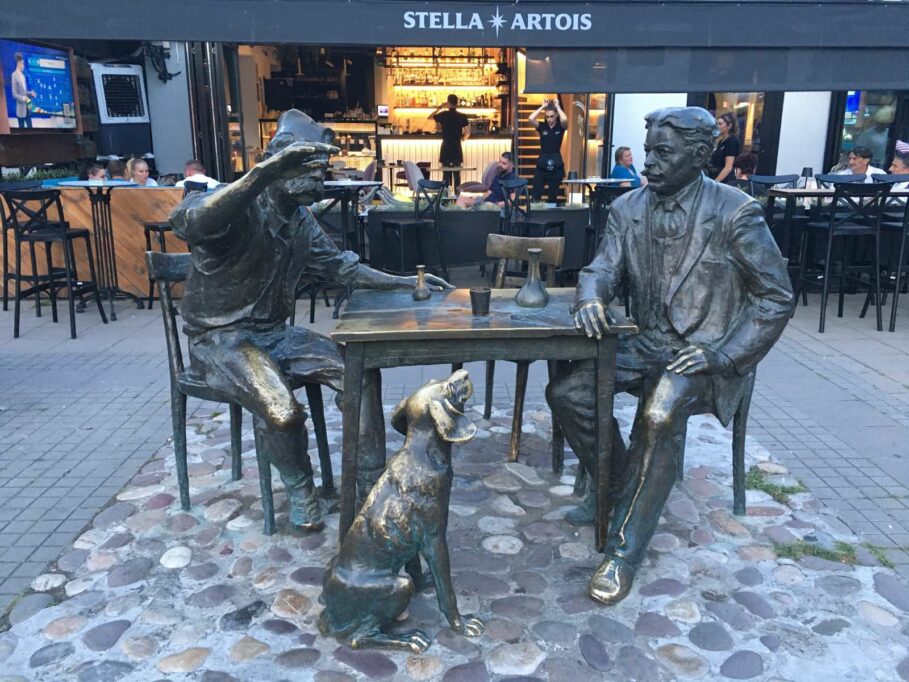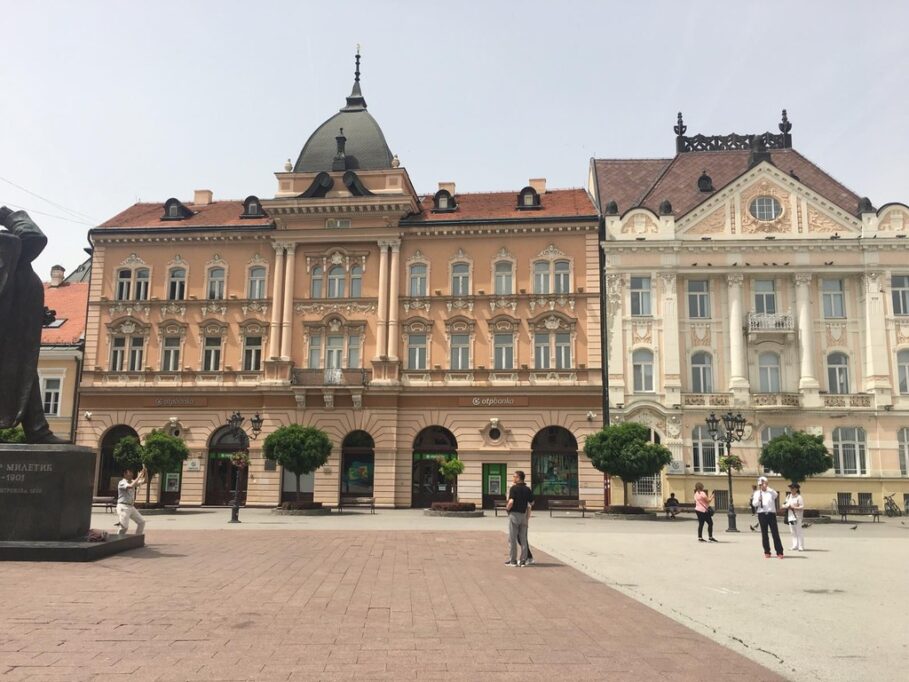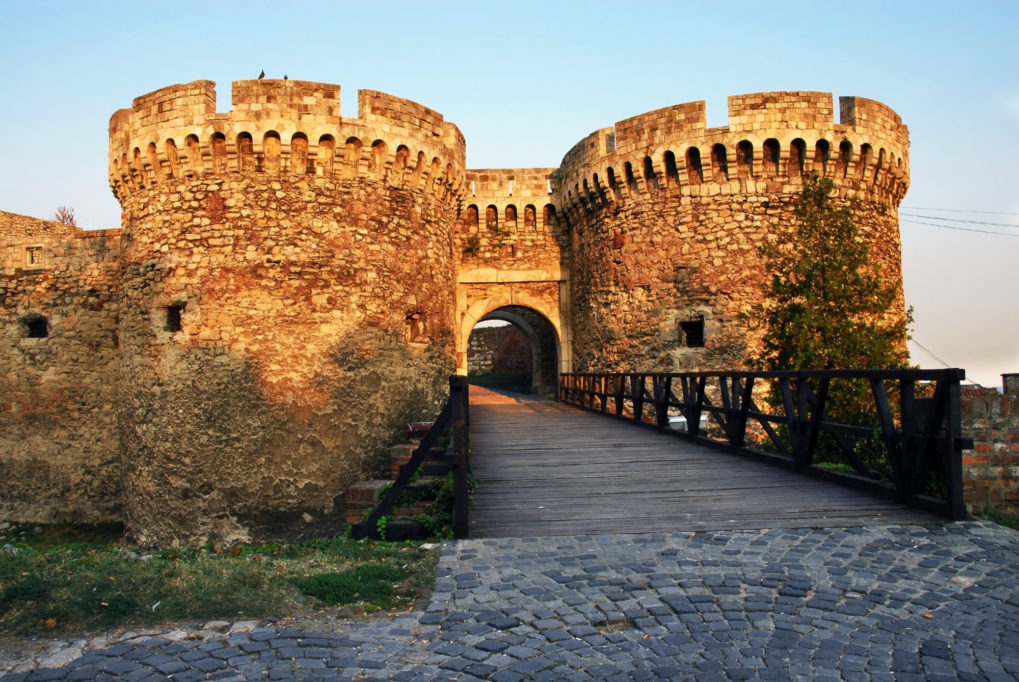SERBIA
TRAVEL GUIDE
Discover Serbia’s rich cultural heritage, stunning landscapes, and vibrant cities with our comprehensive travel guide. From the historic charm of Belgrade and the architectural wonders of Novi Sad to the natural beauty of the Tara National Park and the enchanting monasteries of Fruška Gora, Serbia offers a diverse array of experiences. Explore ancient fortresses, savor traditional cuisine, and immerse yourself in the local customs and festivals that make Serbia a captivating destination for travelers.
Need To Know: How To Travel To Serbia
No, Serbia is not part of the Schengen Zone. While it is a candidate for EU membership, it does not have open borders with Schengen countries. Travelers to Serbia may need to check visa requirements depending on their nationality, as Serbia maintains its own border control policies.
Serbia offers a captivating blend of rich history, vibrant culture, and stunning natural beauty. From exploring Belgrade’s lively nightlife to hiking in Tara National Park, Serbia is a hidden gem in Europe. With delicious cuisine, welcoming locals, and affordable travel, it promises an unforgettable adventure for all types of travelers.
Whether you need a visa to travel to Serbia depends on your nationality. Citizens from many countries, including EU members, can enter visa-free for short stays. However, travelers from other nations may need to apply for a visa before departure. Always check the latest requirements with official sources.
The currency of Serbia is the Serbian dinar (RSD). It is abbreviated as “RSD” and is the official currency used for all transactions within the country. While major cities and tourist areas may accept euros, it’s advisable to use dinars for everyday purchases, especially in smaller establishments.
Yes, Serbia is relatively affordable to visit compared to many Western European destinations. Accommodation, food, and transportation are inexpensive, with budget-friendly options available for most travelers. Local restaurants and public transport offer great value, making Serbia an excellent choice for those seeking an affordable European adventure.
Serbia is generally safe for travelers, with low crime rates and friendly locals. However, like in any country, it’s important to stay alert, especially in crowded areas or at night. Always follow local advice, keep valuables secure, and check travel advisories before your trip for the latest information.
Yes, tap water in Serbia is generally safe to drink, especially in major cities like Belgrade and Novi Sad. The water is treated and meets health standards. However, in rural areas, it’s advisable to check with locals or use bottled water, as some areas may have outdated plumbing.
Traditional Serbian food is hearty and flavorful, featuring dishes like ćevapi (grilled minced meat), sarma (cabbage rolls with meat and rice), pljeskavica (Serbian burger), and ajvar (pepper-based spread). Desserts include tulumbe (sweet pastries) and pita (flaky pastries). Serbian cuisine reflects the country’s diverse cultural influences and agricultural traditions.
Serbia Snapshot: The Ultimate Travel Guide
Travelling to Serbia
Serbia, located in the heart of the Balkans, is a destination that offers a rich blend of cultural heritage, stunning landscapes, and vibrant cities. Traveling to Serbia is relatively straightforward, with Belgrade Nikola Tesla Airport being the main international gateway. This airport connects Serbia to many major European cities and other destinations worldwide. Additionally, Serbia is well-connected by road and rail, making it easily accessible from neighboring countries like Hungary, Romania, Bulgaria, and Croatia.
For those preferring overland travel, international bus and train services provide comfortable and scenic routes into the country. Serbia’s position as a crossroads of Southeast Europe makes it an ideal starting point for exploring the Balkans.
Once in Serbia, travelers will find a variety of transportation options, including domestic flights, trains, and an extensive bus network. Taxis and car rentals are also widely available, offering convenience for exploring urban areas and more remote attractions.
English is commonly spoken in tourist areas, and the local currency, the Serbian dinar (RSD), is used for transactions. Major credit cards are accepted in cities, but it’s advisable to carry cash for smaller towns and rural areas. With its hospitable people and diverse attractions, Serbia promises a memorable travel experience for all.
How to Plan a Trip to Serbia
Planning a trip to Serbia involves several steps to ensure a smooth and enjoyable experience. Start by researching the key attractions and regions you wish to visit. Serbia offers a variety of experiences, from the bustling nightlife and historical landmarks of Belgrade to the tranquil monasteries of Fruška Gora and the scenic beauty of Tara National Park.
Visa Requirements
First, check the visa requirements for your nationality. Citizens of many countries can enter Serbia visa-free for short stays, but it’s essential to verify the specific regulations that apply to you. Visit the Serbian Ministry of Foreign Affairs website for the most up-to-date information.
Itinerary
Create a detailed itinerary based on your interests. If you’re into history and culture, consider visiting Belgrade’s Kalemegdan Fortress, the historic town of Novi Sad, and the monasteries in the region of Kosovo and Metohija. Nature enthusiasts should explore the Đerdap National Park and the Zlatibor mountain region.
Accommodation
Book your accommodation in advance, especially if traveling during peak tourist seasons or major festivals. Serbia offers a wide range of options, from luxury hotels and charming boutique inns to budget hostels and Airbnb rentals.
Transportation
Plan your transportation within the country. Serbia has a reliable network of buses and trains that connect major cities and towns. Renting a car is also a convenient option, particularly for exploring more remote areas. Public transportation in cities is efficient and affordable.
Serbian Food
Serbian cuisine is a delightful amalgamation of Mediterranean, Hungarian, Turkish, and Austrian influences, reflecting the country’s diverse history and cultural connections. Food in Serbia is hearty, flavorful, and centered around fresh, locally sourced ingredients.
Traditional Dishes
A must-try dish is ćevapi, which consists of grilled minced meat served with onions and flatbread. Another popular dish is pljeskavica, a Serbian-style hamburger often stuffed with cheese or kajmak, a creamy dairy product. Sarma, cabbage rolls filled with minced meat and rice, and gibanica, a savory cheese pie, are also traditional favorites.
Soups and Stews
Serbian cuisine features a variety of soups and stews, such as čorba, a thick, hearty soup made with meat, vegetables, and spices. Paprikaš, a stew made with paprika and meat, showcases the Hungarian influence on Serbian food.
Desserts
When it comes to desserts, don’t miss out on trying baklava, a sweet pastry made of layers of filo filled with nuts and honey, or palačinke, thin pancakes filled with jam, chocolate, or cheese.
Drinks
Rakija, a fruit brandy, is the national drink of Serbia and comes in many varieties, including plum (šljivovica) and apricot (kajsijevača). Serbian wines and beers are also worth sampling, with local wineries producing high-quality red and white wines.
Dining in Serbia is not just about the food; it’s also about the experience of sharing meals with friends and family. Serbian hospitality is warm and welcoming, making every meal an enjoyable and memorable occasion.
Culture and Religion
Serbia’s culture is a rich tapestry woven from its historical influences, geographical diversity, and the traditions of its people. The country boasts a vibrant cultural scene that includes music, dance, literature, and the visual arts.
Music and Dance
Traditional Serbian music features instruments like the gusle, a one-stringed instrument, and is characterized by epic poetry and folk songs. Modern music scenes in cities like Belgrade are thriving with rock, jazz, and electronic music. The country’s dance traditions, such as the kolo, a circle dance, are integral to national celebrations and festivals.
Literature and Art
Serbia has a strong literary heritage, with notable writers like Ivo Andrić, a Nobel laureate, whose works explore the complexities of Balkan history and culture. Serbian art ranges from medieval frescoes and Orthodox iconography to contemporary art scenes in urban galleries.
Religion
Orthodox Christianity is the predominant religion in Serbia, profoundly influencing the country’s cultural and spiritual life. The Serbian Orthodox Church, with its beautiful monasteries and churches, plays a significant role in preserving national identity and traditions. Notable religious sites include the Studenica Monastery, a UNESCO World Heritage site, and the St. Sava Temple in Belgrade, one of the largest Orthodox churches in the world.
Festivals
Serbia hosts numerous cultural festivals throughout the year, celebrating everything from film and theater to traditional music and food. The EXIT Festival in Novi Sad is one of Europe’s premier music festivals, attracting international artists and visitors.
Serbia’s culture and religion offer a deep and enriching experience for visitors, providing insights into the country’s historical roots and contemporary life.
Safety and Dangers
Serbia is generally a safe destination for travelers, with a relatively low crime rate and a welcoming attitude toward tourists. However, as with any travel destination, it’s important to take common-sense precautions to ensure a safe and enjoyable trip.
General Safety
Violent crime is rare in Serbia, but petty crimes such as pickpocketing can occur, especially in crowded areas and on public transportation. Keep your belongings secure, be mindful of your surroundings, and avoid displaying valuables in public.
Road Safety
Traffic in Serbia can be unpredictable, with varying road conditions and driving habits. If you plan to rent a car, be cautious on rural roads and follow local traffic laws. Always wear a seatbelt and avoid driving at night when road visibility is reduced.
Health and Medical
Serbia has a good standard of healthcare, with medical facilities available in all major cities. It’s advisable to have travel insurance that covers medical expenses. Pharmacies are well-stocked, but it’s a good idea to bring any specific medications you might need.
Political Sensitivities
Be aware of the political history and current issues in Serbia, particularly regarding Kosovo. It’s best to avoid discussing sensitive political topics in public settings to prevent any misunderstandings or conflicts.
Natural Hazards
If you’re planning outdoor activities such as hiking or exploring nature reserves, be prepared for varying weather conditions and terrain. Inform someone of your plans, carry appropriate gear, and stay on marked trails. In the summer months, be cautious of sun exposure and stay hydrated.
Overall, Serbia is a safe and hospitable destination for travelers. By taking a few precautions and respecting local customs, you can enjoy a worry-free and enriching travel experience.



